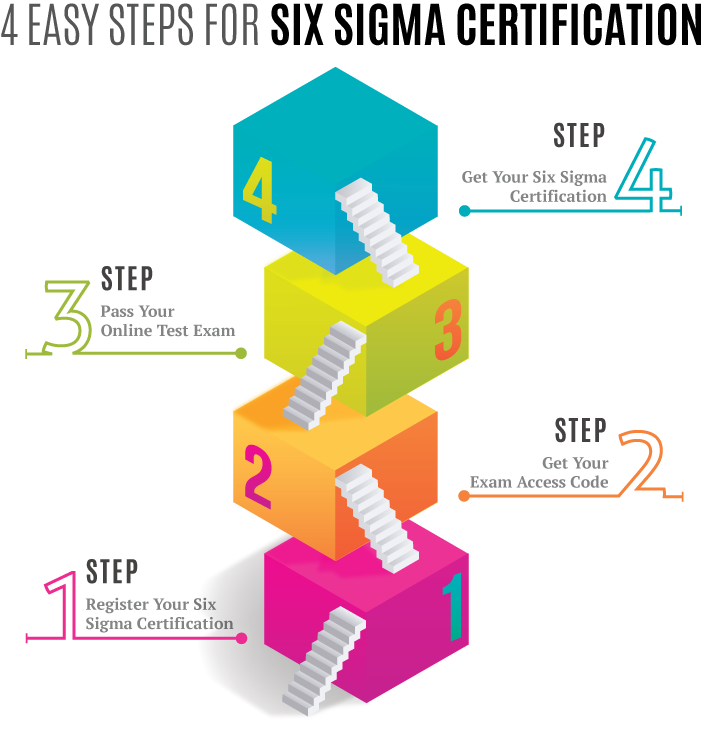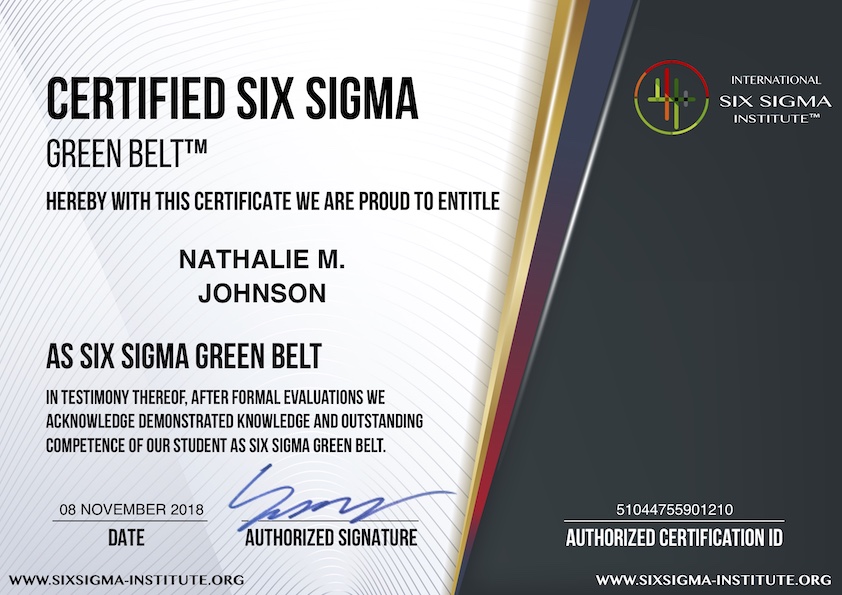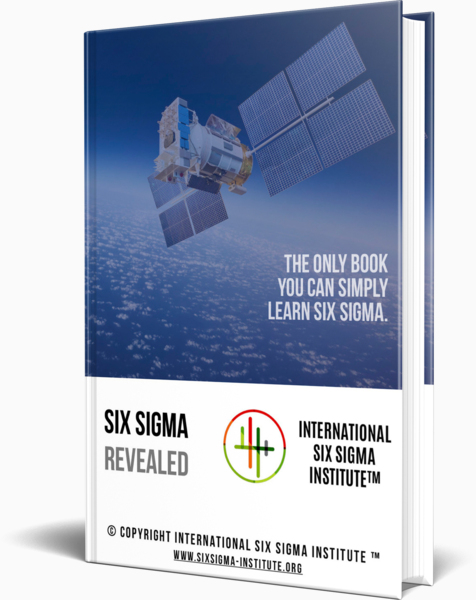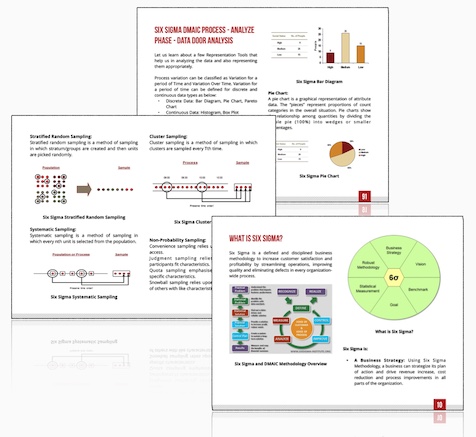How does Six Sigma DMAIC Process work?
Let us now understand how the DMAIC process works. DMAIC is an acronym for its five phases – Define, Measure, Analyze, Improve and Control. DMAIC is a Six Sigma methodology which helps in achieving process improvements by reducing variation. Each phase of has its own significance and we will understand how DMAIC process reduces many root causes to only a few vital root causes. Let’s look at the below diagram:
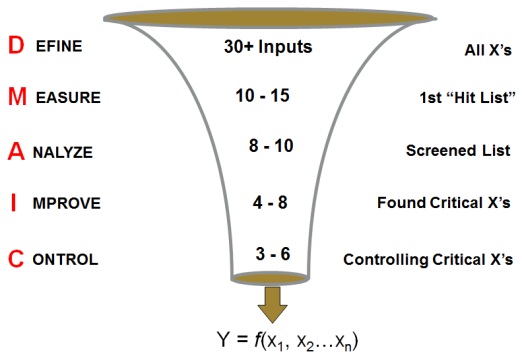
Six Sigma DMAIC Process
As we see above, the Define phase looks at all the X’s (here X is an independent variable as discussed in the previous section). In the Measure phase, we get the 1st “Hit List” where the root causes (X’s) are reduced to just 10 – 15. In Analyze phase, we screen the available list and reduce the root causes to 8 – 10. In Improve phase, we identify just 4 – 8 critical X’s and in Control phase, we are controlling only 3 – 6 root causes (X’s). Thus, by controlling just 3 – 6 root causes we are able to positively impact the project Y.
Characteristics of a successful project:
- Should be related to your day to day work
- Should be manageable in terms of time-frame
- Should be aligned with business goals and results
- Should preferably address only one CTQ (Critical To Quality) parameter
- Should address issues which are important to the customer
- The improvements that you do should be locally actionable
In the above characteristics, we have a CTQ parameter. Here, CTQ stands for Critical To Quality. In layman’s language, CTQ is nothing but a metric that helps in measuring the extent of performance. CTQ can be of various types such as CTD (Critical to Delivery), CTP (Critical to Process), among others. Some of the examples of CTQ’s are Cycle Time in a process, Quality Scores, Yield%, among others.
Projects must be tightly bound and must not focus on solving broad issue such as global warming or world’s pollution.
When a Six Sigma project is initiated, it generally happens that we do not scope the project appropriately. During the course of the project, we keep adding additional parts to the project and the team has to manage these additional items which were not considered earlier. This phenomenon of including additions to the project is termed as “scope creep” and leads to challenges in project execution at a later stage. Projects which lead to scope creep are termed as projects which are trying to solve “global warming”. In order for the projects to achieve the desired results, they must be tightly bound and must not focus on solving broad issues.
A process-focused business constantly realigns processes to remain capable of meeting changing market demands. Only by gaining predictability can an enterprise truly maintain capable processes to changing customer demands.
Here, we should focus on getting the Voice of Process to understand the real nuances that it may face during the course of its operations. Voice of Process helps in understanding the metrics and the inherent fluctuations of these metrics.
Three key terms that help us define process capability are:
- Process Baseline
- Process Entitlement
- Process Benchmark
Six Sigma facilitates in understanding variation in our business processes!
Let’s understand the three key terms:
Process Baseline:
Process baseline is the average long-term performance level of a process when all the input variables in the process are running in an unconstrained fashion. Long term performance is the performance of the process over a period of time.
Process Entitlement:
Process entitlement is the best case short-term performance level of a process when all the input variables in the process are centered and in control. Short term performance is the performance of the process at any given point of time.
Process Benchmark:
Process benchmark is the performance level of the process deemed by comparison to the best process possible. It takes us to the best that anyone has ever done. In practical terms this means researching and finding the best that has ever been done in the industry.
 SIXSIGMA INSTITUTE™
SIXSIGMA INSTITUTE™
